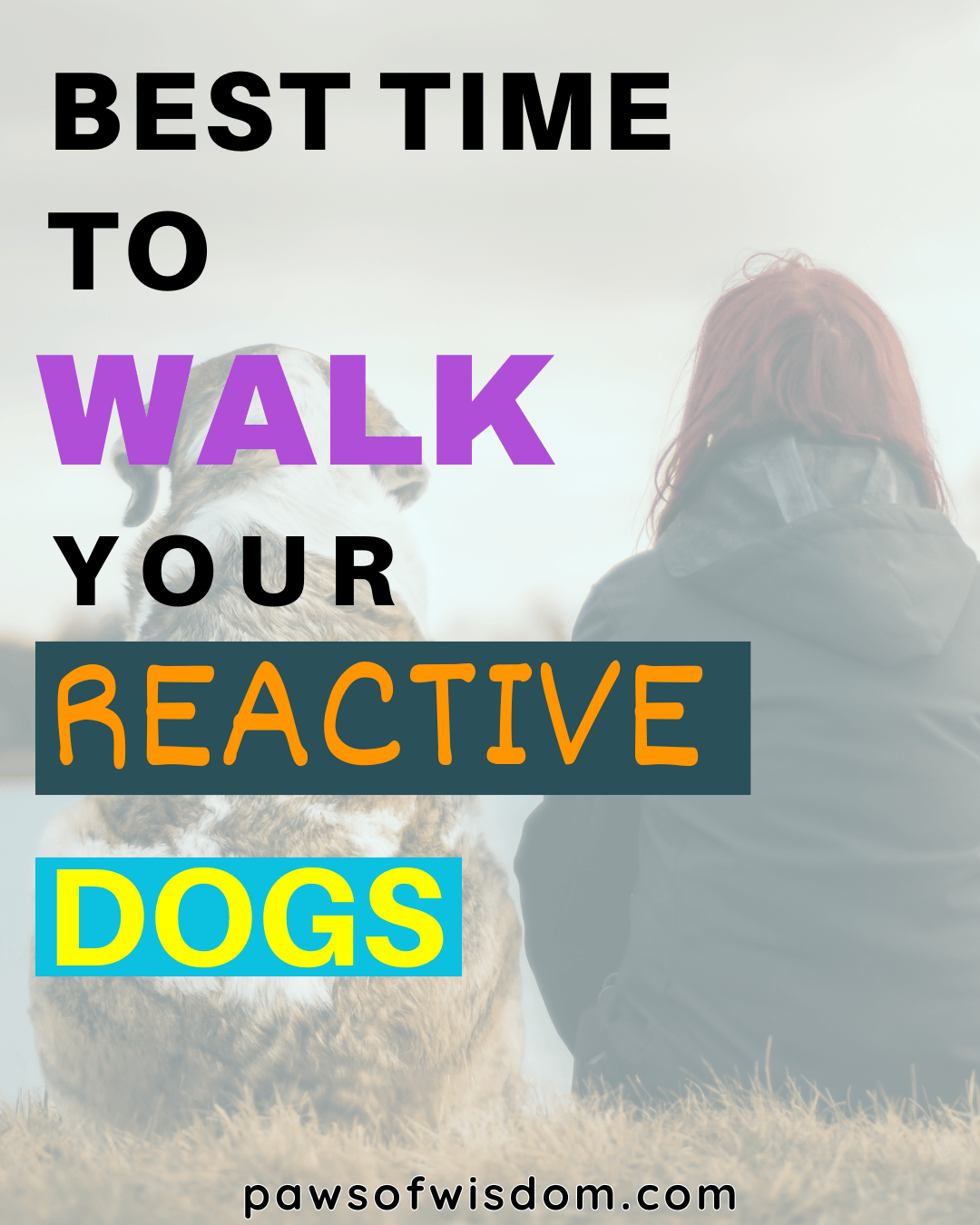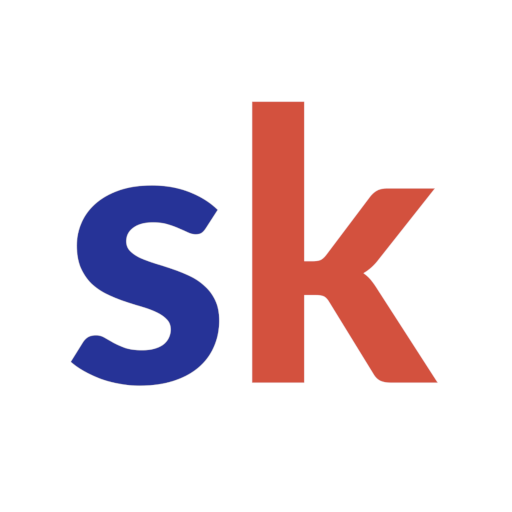Best Time to Walk a Reactive Dog: Set Your Walks Up for Success
The best time to walk a reactive dog can make all the difference between a calm peaceful stroll and a chaos filled meltdown. If every walk feels like you’re constantly dodging triggers, holding your breath at every corner, and counting down the minutes until you and your dog get home again — know you aren't alone.
When your dog struggles to cope with the outside world, timing your walks right is a great management technique that can take a huge weight off both your shoulders.
In this post I'll dive into why timing matters so much for reactive dogs, how to reduce the chances of trigger stacking, and how to set up your walks (and your dog) for more success (and a little less chaos).

Why Timing Matters for Reactive Dogs
With reactive dogs, when you walk can be just as important as how you walk. The right timing can massively reduce the number of triggers your dog is exposed to — whether that’s other dogs, people, bikes, cars, or noisy environments. Timing can alo make a difference to what is going on in the inside of your dog; their stress, frustration, internal feelings.
A big piece of reactivity to understand is trigger stacking. If your dog is already carrying stress, frustration, or overarousal from the previous day or through experiences (or simply from the time of day when their arousal is naturally higher), even a small trigger can tip them over the edge.
Understanding trigger stacking in dogs and how arousal builds is key to reducing reactions, and unpredictable behaviours. Working with your dogs internal state instead of against it will help your dog stay under threshold and actually learn from the experience rather than just survive from it.
When Are Walks Usually Busier?
Choosing quieter walking windows doesn’t just leave the options “early morning or late night.” Depending on your environment, busier times can look different. Start paying attention to the patterns where you live — not just the obvious ones.
Here are some of the most common busy times to be aware of:
School run hours (7:30/8:00–9:00/9:30 AM and 3:00–4:30 PM)
Commute times (early mornings and after 5:00 PM)
Lunchtime walks (lots of professional dog walkers out at this time)
Weekends (parks, nature reserves, and trails tend to be busiest)
Sunny weather days (good weather brings out everyone)
If you’re in a city, your quiet times might be very early or late. When I lived in a city centre apartment, it would start getting busy at about 8:30, and it was chaos from about 10! If I tried taking Jasper out anytime after this, he was instantly overwhelmed as soon as we left the front door, and I could never bring him back down.
In rural areas, midday might be your safest option depending on the environment. Start tracking when your dog’s toughest walks happen — you’ll probably notice a pattern.
Choosing the Best Time for Your Dog
Unfortunately, there are no magic answer here — the best time to walk a reactive dog really depends entirely on your dog’s triggers, environment, arousal, and resilience levels.
Some dogs are naturally more amped up in the mornings. Others are calmer after a good night’s sleep but become more reactive as the day goes on (trigger stacking due to poor regulation). The key is to observe and learn when your dog handles the world best — and work with that, not against it.
Try different times. Watch your dog’s behaviour. Does their energy feel manageable? Are they overstimulated on the walk? Do they seem able to check in with you and disengage from triggers more easily? Do they seem like they're actually enjoying it? Those are your clues.
How to Choose the Right Walking Window: Quick Checklist
Which times of day are quietest in your area?
When does your dog seem calmest (or close enough) and most able to focus?
Do certain routes or environments feel easier than others?
Are you walking when your dog is already carrying stress or frustration?
Can you walk at off-peak times — or switch locations if needed?
Do you really need this walk?
Meet Their Needs Before You Head Out
Here’s something that often gets overlooked by many owners: if your dog’s needs aren’t fully being met outside of your walks, you’re already starting on the back foot. Dogs who are mentally under-stimulated, physically frustrated, or emotionally charged will find it so much harder to stay calm around triggers — no matter what time you walk.
Before you head into the challenge of the outside world, ask yourself:
Have they had time to decompress?
Have you provided mental enrichment or outlets for their natural drives and frustration?
Are they in the right state of mind to even cope with what they’re about to face?
Can you meet their needs a different way?
Trying to walk a dog who’s already wired is like trying to fill a leaking bucket. Building a routine that supports their nervous system before the walk with enrichment, decompression and outlet work can do wonders for behaviour.
If your dog’s constantly “on,” they don’t need more walks — they need better outlets.
👉🏾 [Grab the FREE Paws Of Wisdom Breed Specific Outlets Guide] and learn how to work with their instincts, not against them.
Only available in the Regulators Community Resource Vault!
5 Extra Tips to Support Your Reactive Dog on Walks
Alongside walking at quieter times and working through your triggers, here are five extra strategies that can help make a real difference in managing reactivity with confidence:
#1 - Choose Routes Wisely
Stick to open spaces where you can create distance if needed (and if you can). Avoid narrow paths or busy parks where surprise encounters are harder to manage.
#2 - Check the Energy You Leave the House With
The walk doesn’t start when you hit the pavement — it starts at home. If your dog is barking, overaroused, anxious or hyped before you even grab the lead, that energy is going to carry straight through the door and through the entire walk. Aim to leave the house calmly. If your dog struggles to stay settled, pop them on place, do some decompression or work on some simple engagement exercises before heading out.
#3 - Get Curious About Your Dog’s Threshold
Learn how close your dog can get to a trigger before they start reacting — and aim to stay under that threshold while you build skills and confidence. Slowly work on decreasing that distanceover time at your dogs pace.
#4 - Prioritise Quality Over Quantity
A short, successful walk where your dog stays under the threshold is far more valuable than pushing for a longer, stressful one. Pair this with meeting your dog's needs can build a strong, unshakeable foundation.
Focus on good reps, not distance.
#5 - Support Decompression After Setbacks
If your dog has a tough walk or a bad experience, give them space to reset. A mistake a lot of owners make is just continuing the walk after a meltdown. If you know anything about trigger stacking, then you know that this stress carries on the walk (and if you don't, spoiler, I guess).
Allowing a dog time to decompress after a negative experience can help them regulate it down to a more level headed state. Gentle movement, targeting, obedience and scatter feeding are just a few ideas of how to decompress after a bad experience.
Quick Recap: Setting Your Dog Up for Success
Timing matters: less exposure to triggers = more positive experiences and success.
There’s no universally perfect time — but there is a best time for your dog.
Pay attention to your local busy times and your dog’s arousal levels.
Meet their needs before asking for tough work on walks.
Don’t be afraid to skip the walk and focus on outlets, enrichment or decompression instead if needed.
Ready to Tackle Reactivity With Confidence?
Walking at quieter times is a great starting point — but managing reactivity takes more than just good timing, and if you aren't careful you can get stuck in this management phase. True progress happens when you start understanding the why behind your dog’s reactions and give them the tools they need to cope, decompress, and thrive.
That’s exactly why I created the Reactivity Starter Bundle — a free step-by-step resource designed to help you get clear on your dog’s triggers, build stronger coping strategies, and support your dog’s wellbeing.
Inside, you’ll find my socialisation checklist, trigger stacking guide, scatter feeding tips, and more — all aimed at helping you reduce stress, avoid overwhelm, and work toward calmer, happier walks.
👉🏾 Download the FREE Reactivity Starter Bundle today and take the first step toward calmer walks and a more confident dog.
Final Thoughts
Finding the best time to walk a reactive dog is just one piece of the puzzle when it comes to calmer, safer and stress-free walks — but it’s an important one. When you can set the stage with the right timing, the right energy, and the right approach, you give your dog the best chance to succeed.
Remember, life with a reactive dog isn’t about rushing or chasing perfection, that's how accidents and setbacks happen. It’s about understanding your dog’s needs, meeting them where they’re at, and putting the right strategies in place to help them feel more relaxed and engaged.
Take your time, stay consistent with it, and know that every step forward builds up!
Frequently Asked Questions (FAQs): Best Time To Walk A Reactive Dog
The best time to walk a reactive dog is usually during quieter parts of the day which tend to be early mornings or late evenings. These times typically mean fewer dogs, people, and distractions (and stress), giving your dog the space they need to stay under threshold and practice calmer behaviour.
It’s best to avoid busy peak times like lunchtime, after school hours, or early evening rush when parks, roads and streets are full of people and dogs. These busy periods can increase the chances of unexpected triggers and overwhelm making it harder for your reactive dog to stay calm.
Avoid forcing your dog into situations they’re not ready for, such as walking too close to triggers or ignoring their stress signals (use this dog reactivity chart to understand your ogs warning signals. Don’t rely solely on obedience commands to manage reactivity — focus on reducing arousal, building engagement, and setting your dog up for success through structured socialisation, boundaries and outlets.
This depends on your dog and your local environment. For many reactive dogs, early morning walks are ideal because the world is calmer and quieter. However, if your evenings tend to be quieter where you live, that will be the better option (ironically you might find that the time you choose to walk your reactive dog is also the same idea as other reactive dog owners).
Yes — especially for reactive, anxious, or easily overstimulated dogs. Skipping a walk now and then can actually help prevent triggers stacking. Instead, focus on providing other forms of mental stimulation, outlets and enrichment at home or in quiet areas, like sniffing games, training sessions, or outlets that meet their breed needs.
Related Reading
A FREE community with downloadable guides and resources, and people who get it.
A simple and structured reset for overstimulated, dysregulated, chaotic dogs.
Simple, clear guidance to help you understand your dog through a regulation-first lens.










